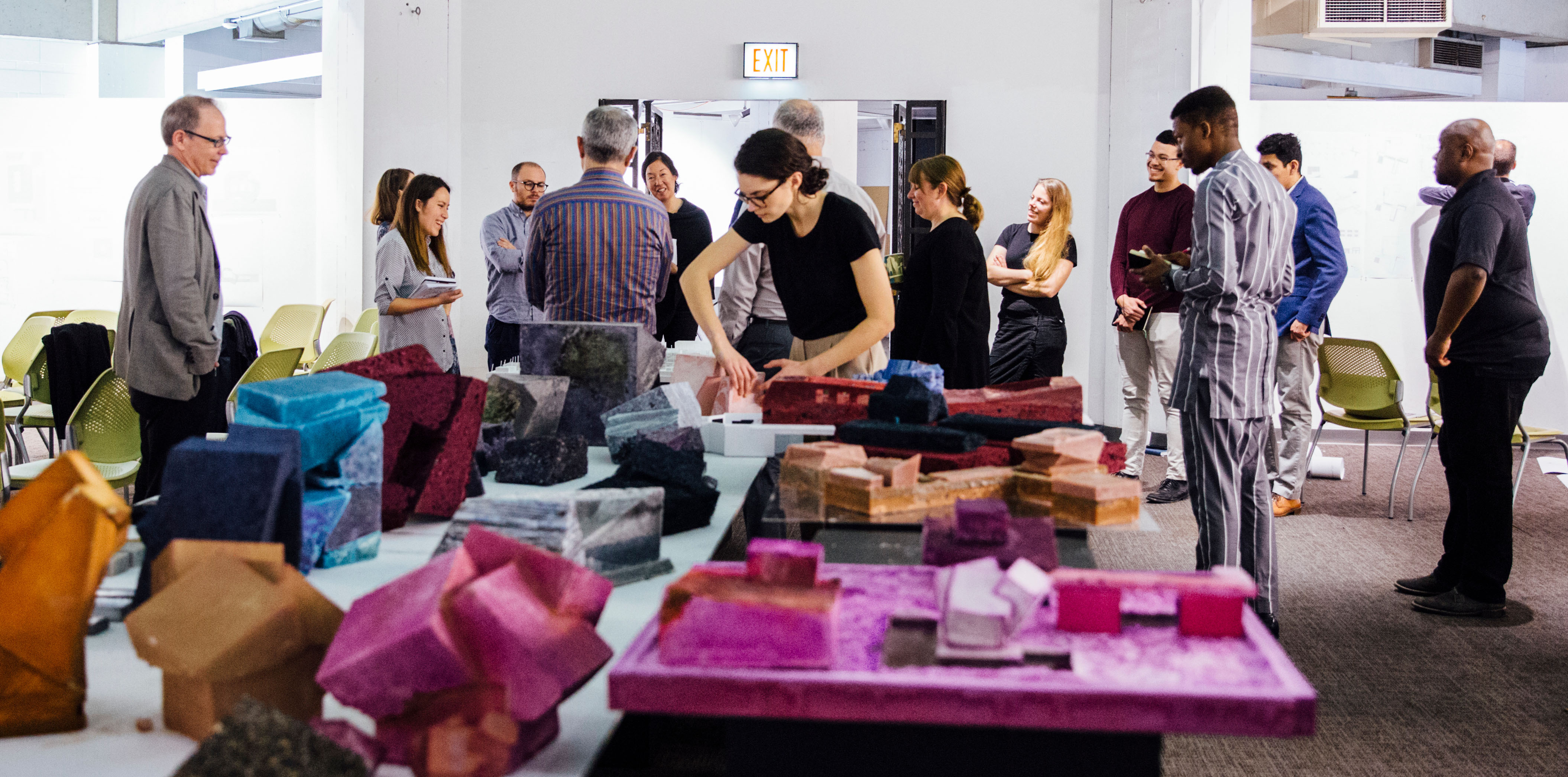Pre-Program
New MArch students begin their studies with an intensive required workshop in the two weeks before their first semester begins. The workshop gives students the necessary preparation to begin graduate study. Students are introduced to contemporary methods of production, including software, as well as current debates in the field.
Prior to enrolling, students without an undergraduate degree in architecture must additionally complete three prerequisite courses: one calculus and two art history or architecture history. Learn more on our Prerequisite page.
Year 1: Discipline
The first-year studio sequence introduces the knowledge and experience of architectural discipline. Discipline establishes identity and enables variation: the set of concepts, techniques and modes of operating that constitute the field at any point in time, and the manners of unfolding its historical potentials and contemporary opportunities in alternative ways. Discipline is established through repetition, the source of both significance and newness in architecture. As an instigator of qualities and an organizer of quantities, the architectural discipline is an exercise in both control and power.
Fall: Control of Qualities
Introduction to architecture as a function of technique and geometry, beginning with an understanding of scale, proportion, and formal organization.
Spring: Power over Quantities
Introduction to architecture as a function of polemic and scenario, beginning as a confrontation with size, number and activity.
Year 2: Conditions
The second year subjects the disciplinary techniques and approaches of the first year to a set of external contexts and conditions of particular importance to the School: the city and technology. As a corollary to this work, one objective across the year is to develop the ability to communicate with diverse audiences: both distilling and projecting information and identity from multiple programs and publics (fall), and issuing instructions and specifications to contractors and collaborators (spring).
Fall: Comprehensive Design (Technology)
Integrating design and architectural technology, this housing studio takes building codes, structural and mechanical systems, and material lifecycles as generative design parameters to achieve the scale of detail development and the representational level of construction documents.
Spring: Synthetic Design (Urbanism)
This urban design studio addresses the issue of contemporary collective space through the development of a large, mixed-use complex on an urban site.
Year 3: Position
While the first-year work is largely abstract and the second-year work is sited in Chicago, the third-year work transports disciplinary lessons and opportunities elsewhere. Architectural and urban design and research agendas of current significance are explored with distinguished visiting faculty (e.g., the Greenwald Visiting Professor) and defined as the result of a year-long course of study (consisting of a fall seminar and spring studio) in a research cluster geared toward publishing its findings and proposals.
Fall: Topic Studios
These option studios provide the opportunity to work on a contemporary architectural and/or urban design problem through the lens of an internationally-recognized instructor.
Spring: Research Project
Individual and collaborative design-research that addresses concerns at the edge of the contemporary discipline and results from a year-long course of study.

